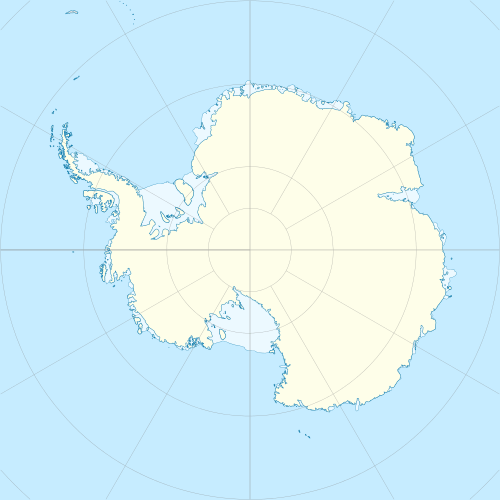Trinity Island
 Trinity Island | |
| Geography | |
|---|---|
| Location | Antarctica |
| Coordinates | 63°47′S 60°44′W / 63.783°S 60.733°W |
| Archipelago | Palmer Archipelago |
| Length | 24 km (14.9 mi) |
| Width | 10 km (6 mi) |
| Administration | |
|
None | |
| Demographics | |
| Population | 0 |
| Additional information | |
| Administered under the Antarctic Treaty System | |
Trinity Island or Île de la Trinité or Isla Trinidad is an island 24 km (15 mi) long and 10 km (6 mi) wide. It lies 37 km (23 mi) east of Hoseason Island in the northern part of the Palmer Archipelago, Antarctica. It was named by Otto Nordenskiöld, leader of the Swedish Antarctic Expedition (1901-1904) in commemoration of Edward Bransfield's "Trinity Land" of 1820.
Geography
Trinity Island is one of the most northerly of the islands of the Palmer Archipelago, a chain of more than fifty islands running parallel with the coast of the Antarctic Peninsula. It is about 24 km (15 mi) long and 10 km (6 mi) wide, and Hoseason Island lies about 37 km (23 mi) to the west. A bay on the south side of the island is known as Mikkelsen Harbor. It provides a sheltered anchorage and was much used by sealing vessels in the first half of the nineteenth century and by Norwegian whaling vessels at the beginning of the twentieth century.[1]
History
%E2%80%93Gentoo_penguins_(Pygoscelis_papua)_02.jpg)
Trinity Island, or the adjoining Davis Coast stretch of the Antarctic Peninsula, may have been the first part of Antarctica spotted by Nathan Palmer, on 16 November 1820. He was an American sealer, exploring southwards from Cape Horn in his little sloop searching for seal rookeries. The whole archipelago was named in his honour in 1897 by Adrien de Gerlache, leader of the Belgian Antarctic Expedition.[1]
Important Bird Areas
A 50-hectare (120-acre) site comprising a rocky headland rising to 250 metres (820 feet) above sea level, at the south-western extremity of the island, has been designated an Important Bird Area (IBA) by BirdLife International because it supports a breeding colony of about 200 pairs of imperial shags. Chinstrap penguins also nest at the site.[2] Another IBA on the island is Cape Wollaston at its north-western extremity.
See also
References
- 1 2 Mills, William J. (2003). Exploring Polar Frontiers: A Historical Encyclopedia. ABC-CLIO. p. 662. ISBN 978-1-57607-422-0.
- ↑ "Trinity Island southwest". BirdLife data zone: Important Bird Areas. BirdLife International. 2013. Retrieved 2013-01-20.
Coordinates: 63°47′S 60°44′W / 63.783°S 60.733°W